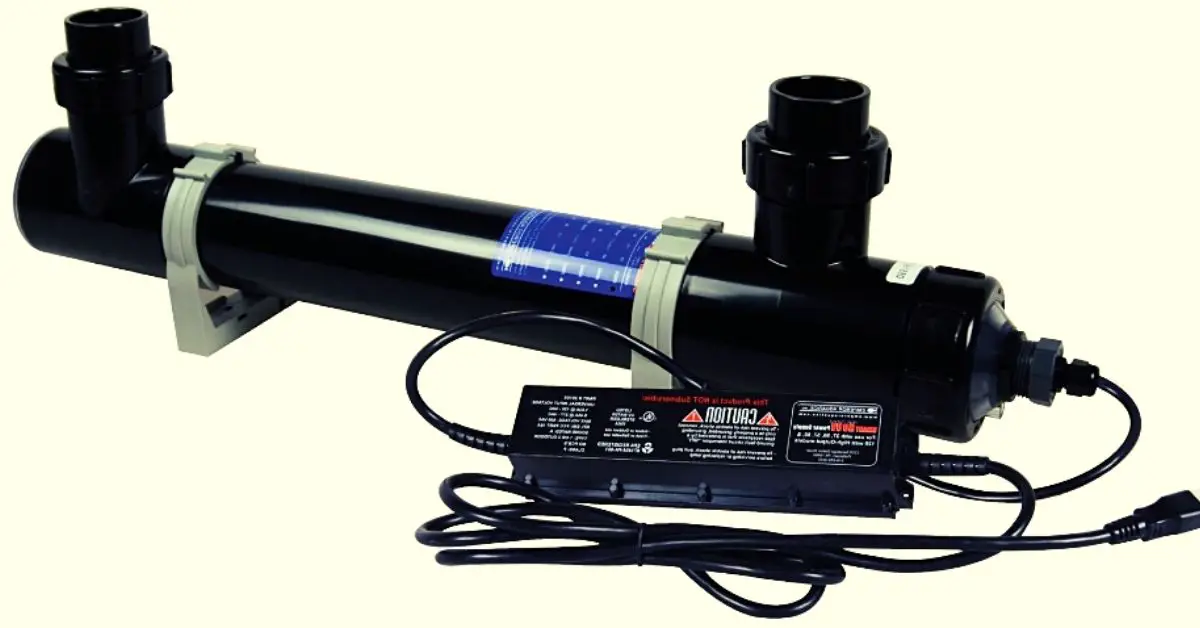UV sterilizers are a popular choice for water purification, as they are said to be able to kill 99.9% of all bacteria. However, some researchers believe that this type of sterilization may also kill off beneficial bacteria.
Beneficial bacteria: what are they?
Beneficial bacteria can help to break down waste and keep the tank clean. They can also help to cycle the tank and create a healthy environment for the fish and plants.
A healthy fish pond is a home to a variety of bacteria, both good and bad. The good bacteria help keep the pond clean and healthy while the bad bacteria can cause problems. Adding beneficial bacteria to a fish pond can be beneficial to the fish and the tank.
The benefits of adding these bacteria include reducing ammonia levels, reducing nitrite levels, and reducing the number of algae in the tank.
Do I need a UV sterilizer in my pond?
A pond is a great place to relax and enjoy nature, but it is important to keep it clean and healthy so that you and your fish can enjoy it for years to come. One of the most important things you can do to keep your pond clean is to use a UV sterilizer.
Cutter Backyard Bug Control Spray Concentrate (2 Pack), Kills Mosquitoes, Fleas & Listed Ants, 32 fl Ounce
26% OffEAST OAK Outdoor Storage Box, 31 Gallon Deck Box Indoor and Outdoor Use, Waterproof Resin Storage Bin for Package Delivery, Patio Cushions, Gardening Tools, Outdoor Toys, Lockable, UV Resistant, Grey
13% Offaddlon 100FT(50FT*2) LED Outdoor String Lights Waterproof Patio Lights with 32 Shatterproof ST38 Replaceable Bulbs(2 Spare), Dimmable Outside Hanging Lights Connectable for Porch, Backyard, 2200K
22% OffA UV sterilizer kills harmful bacteria and algae, which keeps your pond healthy and looking its best. So, do you need a UV sterilizer in your pond? The answer is most likely yes.
How does a UV sterilizer work?
A UV sterilizer is a device that uses ultraviolet radiation to kill bacteria and other microorganisms. It does this by exposing the organisms to a beam of UV light. The light damages the DNA of the organisms, which kills them. UV sterilizers are used in a variety of applications, including water purification, food safety, and medical equipment disinfection.
Ultraviolet radiation is a type of electromagnetic radiation. It has a wavelength that is shorter than that of visible light, making it invisible to the human eye. UV sterilizers use this type of radiation to kill microorganisms.
The radiation penetrates the cell walls of the microorganisms and damages their DNA, which prevents them from reproducing. Sterilization is used to kill microorganisms that cause infections, such as fungi and bacteria.
Can UV light kill beneficial bacteria?
UV light has been shown to be an effective way to kill bacteria both harmful and beneficial. It is often used in water treatment facilities to kill harmful bacteria. However, there is some concern that it may also kill beneficial bacteria. Some bacteria play an important role in nutrient cycling and are essential for healthy soil, plant, and animal life.
Does UV light kill nitrifying bacteria?
UV light is known to kill many types of bacteria. Nitrifying bacteria are no exception. UV radiation can kill these bacteria within minutes. However, the extent to which UV light kills nitrifying bacteria in water systems is not well understood. Some studies have shown that UV radiation is an effective method for reducing the number of nitrifying bacteria in water systems.
Does UV sterilization kill nutrients in your pond?
No, UV sterilization does not kill nutrients in your fish tank. However, it can kill harmful bacteria and organisms that can potentially make your fish sick.
What types of bacteria can a UV sterilizer kill?
Ultraviolet sterilization is a process that uses ultraviolet light to kill bacteria. This process is used in a number of settings, including water treatment and the medical industry. There are a number of different types of bacteria that can be killed with a UV sterilizer. Some of the most common types of bacteria that can be killed with a UV sterilizer include Nitrosomonas and Nitrobacter for example, E. coli, Salmonella, and Streptococcus.
What is the ideal time for a UV sterilizer to run in a pond?
UV sterilizers are a great way to keep ponds clean and free of harmful algae. The ideal time for a UV sterilizer to run in a pond is early morning or late evening when the sun is not as bright. This will allow the UV sterilizer to work more efficiently and kill any harmful bacteria or algae.
UV sterilizers should only be run when the water is cold. This is because the UV light can’t penetrate the water as well when it is warm, and it won’t be effective at killing bacteria.
What are the pros and cons of UV sterilizer in a pond?
Ultraviolet sterilizers are becoming a popular choice for pond owners. They are relatively affordable and easy to install, but there are some pros and cons to consider before making a decision.
Pros
UV sterilizers work by emitting ultraviolet light that kills bacteria and other organisms in the water. This can be beneficial for ponds with high levels of algae or other organic material. It can also help reduce the amount of suspended solids in the water.
Cons
One of the main cons of using a UV sterilizer is that it can be expensive to purchase and operate. Additionally, they can only kill certain types of bacteria and may not be effective against all pathogens. UV sterilizers can also produce harmful byproducts if not used properly. It also requires regular cleaning and replacement of the bulbs, which can be a hassle.
References:





















